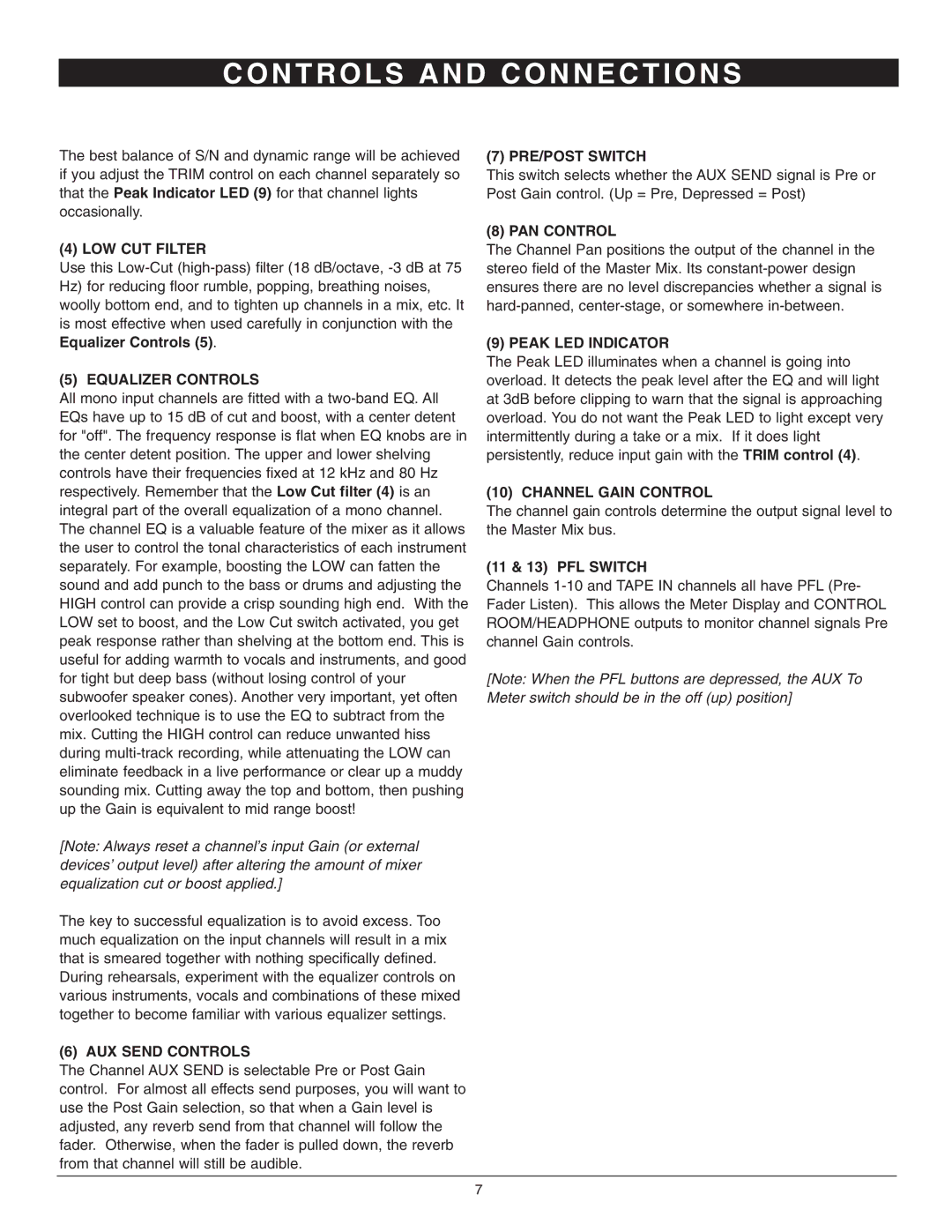
C O N T R O L S A N D C O N N E C T I O N S
The best balance of S/N and dynamic range will be achieved if you adjust the TRIM control on each channel separately so that the Peak Indicator LED (9) for that channel lights occasionally.
(4) LOW CUT FILTER
Use this
(5) EQUALIZER CONTROLS
All mono input channels are fitted with a
[Note: Always reset a channel’s input Gain (or external devices’ output level) after altering the amount of mixer equalization cut or boost applied.]
The key to successful equalization is to avoid excess. Too much equalization on the input channels will result in a mix that is smeared together with nothing specifically defined.
During rehearsals, experiment with the equalizer controls on various instruments, vocals and combinations of these mixed together to become familiar with various equalizer settings.
(6) AUX SEND CONTROLS
The Channel AUX SEND is selectable Pre or Post Gain control. For almost all effects send purposes, you will want to use the Post Gain selection, so that when a Gain level is adjusted, any reverb send from that channel will follow the fader. Otherwise, when the fader is pulled down, the reverb from that channel will still be audible.
(7) PRE/POST SWITCH
This switch selects whether the AUX SEND signal is Pre or Post Gain control. (Up = Pre, Depressed = Post)
(8) PAN CONTROL
The Channel Pan positions the output of the channel in the stereo field of the Master Mix. Its
(9) PEAK LED INDICATOR
The Peak LED illuminates when a channel is going into overload. It detects the peak level after the EQ and will light at 3dB before clipping to warn that the signal is approaching overload. You do not want the Peak LED to light except very intermittently during a take or a mix. If it does light persistently, reduce input gain with the TRIM control (4).
(10) CHANNEL GAIN CONTROL
The channel gain controls determine the output signal level to the Master Mix bus.
(11 & 13) PFL SWITCH
Channels
[Note: When the PFL buttons are depressed, the AUX To Meter switch should be in the off (up) position]
7
